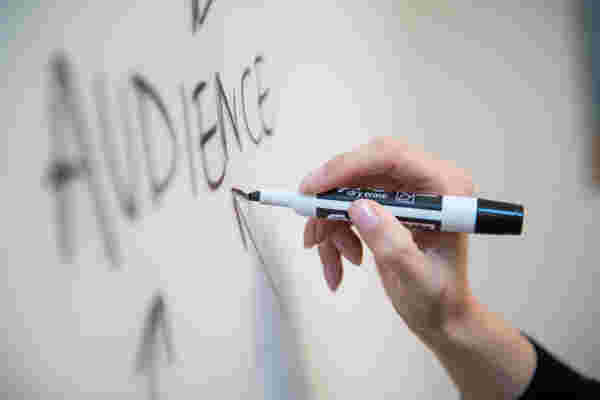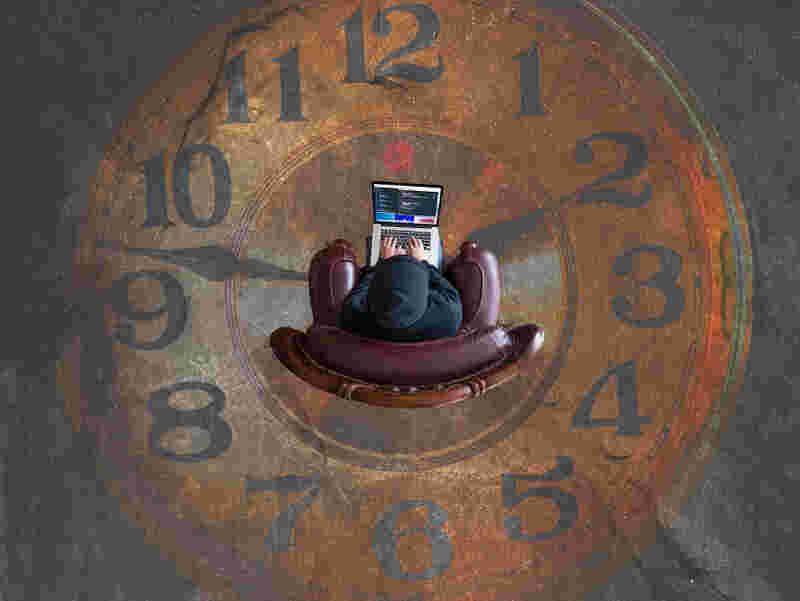
Boost browsing duration
Container for the scroll indicator
(Will be hidden in the published article)Whether your web presence comes with browser-based publications, landing pages and websites ... metrics such as bounce rate, interaction, and dwell time must be taken into account when evaluating the performance of your content strategy.
Of course, you won't force anyone to dedicate time to reading your web magazine. However, the average time spent on visiting your website can be extended by using just a few simple tricks. In this article, we'll show you how!
8 seconds or 8 minutes... What does dwell time say about your web presence?
Dwell time is the amount of time between first loading a page and leaving it - it can be tracked for all pages of a website or for a single specific page. A very similar indicator is the session duration for pages that require a customer login.
Dwell time is an important parameter that search engines track and analyse to determine the ranking of your content. Long dwell times indicate a high-quality content and a high level of interest amongst visitors. If online magazines record a high dwell time, it can be assumed that the expectations and needs of the target group are being met.
If a page is quickly left instead, the search engines conclude that the search intention is not satisfied - as a result, that page will be relegated to the bottom of the list in the future.
At least that's theory. When analysing dwell time, it's necessary to differentiate according to the purpose of the particular URL: A contact page or a lean landing page have short visit times which is normal, as these pages are designed to offer a quick fix. On the contrary, pages with a high level of information and regularly updated content - such as an interactive customer magazine, digital brochures, news magazines and blogs - only provide the desired results if the visitor is willing to spend some more time.
However, there is no golden rule for the "perfect" dwell time. A very long dwell time is not necessarily a positive sign, as it might indicate that readers have to search for too long for a solution or that potential customers are in doubt and need more information.
Whats for sure: dwell time not only reflects the interest in your content and influences SEO rankings, but also boosts the likelihood of conversion. Readers who spend more time reading your digital publication interact more with the content, build stronger trust in the brand and learn about the brand's portfolio of services. At best, long visits boost the conversion rate.
How to keep your readers engaged with your content for a longer period of time
1 Looks matter – Create an appealing design for your web formats
We cannot repeat this often enough: First impressions do matter!
Therefore, pay attention to:
- a professional and contemporary design
- meaningful headlines
- a well-structured navigation menu
- high quality images
- professional copywriting
- a high degree of reading comfort
- a fast loading speed
- up-to-date content
Readers notice at first glance whether your web magazine offers the desired relevance and user-friendliness. Impatient readers may bounce after only a few seconds if your web publication is not properly displayed on their smartphone or fails to load quickly enough.
The appearance of your brochure, landing page or customer magazine determines the very first moments of user experience.
Place important content or summaries at the top of the page so that visitors do not have to scroll through a lot of content to be sure they are in the right place. Ensure that your readers are able to quickly find what they are looking for, whether it is a news report, a manual, a product description or a telephone number. It is important that your target group is able to quickly find their way around and feel at ease right away.
Pay close attention to design elements, embedded graphics, colours and fonts. Is everything perfectly readable? Isn't the font too small or too squiggly? Do the colours work well together? Are the graphics embedded wisely? Are your images sharp? Everything has to be optimised with regard to all these aspects, even the start page or the cover!
2 Gain the trust of your readers
In order to lengthen the duration of visit of potential customers, you must aim to create an emotional connection as fast as possible. This is achieved by including an appealing and engaging video on the very first pages. You can introduce your team, present content in video form or include customer references. By doing so, readers will form a personal bond more quickly and do not have to evaluate whether they can trust your company.
Avoid by all means:
- pushy call-to-actions right at the beginning
- overstatements and clickbait
Keep your communication honest and never create any false expectations among your readership. Provide easy-to-read, well-researched and value-adding content that meets the expectations of your audiences!
3 Create a multimedia experience
Most web users shy away from long, monotonous blocks of text. People don't want to read an entire novel to learn about a company's range of services! Thankfully, brochures, magazines and e-papers offer a range of options to keep your customers interested, even if the subject matter is more complex. It is essential to present the content in the most attractive way.
There is one thing long texts need: a proper structure. This is achieved by dividing the text into sensibly structured sections. In addition, use every possibility to loosen up the text and provide some variety, e.g. through:
- image galleries
- charts
- diagrams
- videos
- infographics
- bullet points and lists
By providing a coherent multimedia experience, you will drive readers to spend more time on your website. Videos, to mention here, are the most effective way to increase the time spent on your site.
4 Invite for interaction
Interaction rates and dwell times are inevitably linked to each other. The more opportunities visitors find to become active themselves, the more time they will spend browsing through your online publication.
- Encourage discussion by inserting a comment box below certain posts. Visitors ask questions, read the comments of other guests and maybe even join the discussion. All this takes up time.
- Interactive content such as surveys, games and slideshows encourage people to click around and ensure a certain fun factor.
- Virtual tours of the company building, the production site or the retail shop awaken just as much interest as panoramic views and 3D visualisations of any kind.
So the more your readers have to explore, experience and click on, the more they will engage with your content! In this regard, it is also very useful to set internal links and refer to similar or further articles.
Readers who stay longer count more!
A high dwell time on your website affects your marketing goals positively in many ways. The aimed length of stay depends on your industry, your target group, the type of website and other factors. Basically, you should strive for visit times of more than two minutes.
By using just a few simple tricks, you can not only increase the length of stay, but also improve overall user experience and boost your conversion rate. Keep in mind that the more time your readers spend, the more engaged and satisfied they are - and the more likely they are to generate revenue for your business in the future!
Webmag: The simple way to digital publishing
Create your digital content formats on your own – responsive, interactive and measurable.
Easy as pie. No special knowledge is needed. You don't even need designers, IT people or agencies. All you need: content.
In 15 entertaining minutes, we will be happy to show you how you can easily create your own digital content formats using Webmag, such as interactive customer magazines, digital brochures, news magazines and blogs – and as a result multiply your reach.

Container for the dynamic page
(Will be hidden in the published article)

